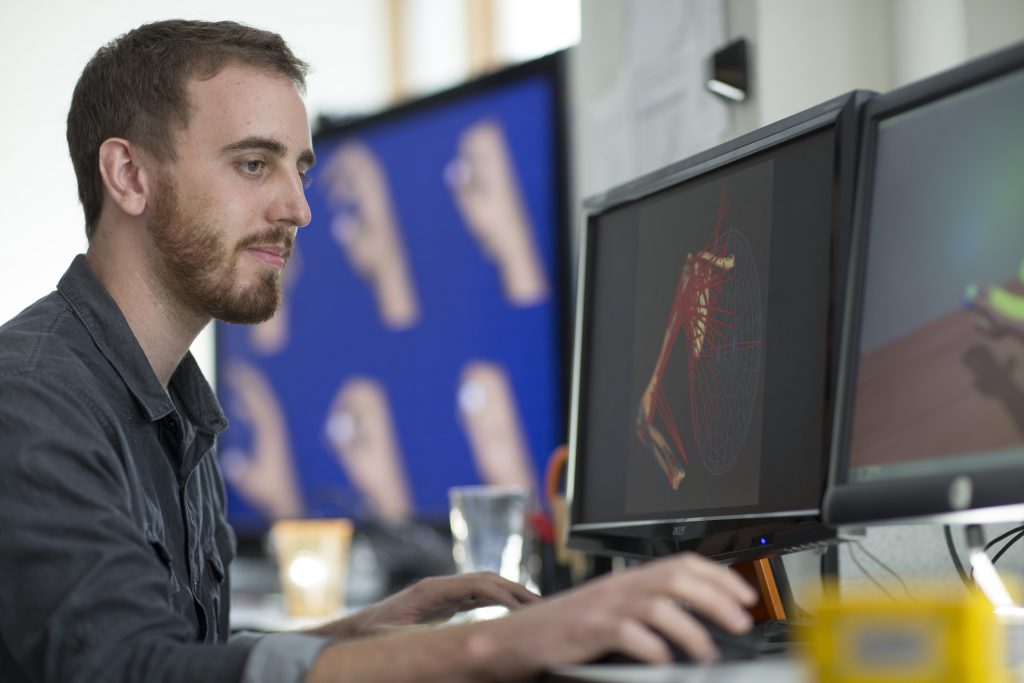The Dynamic Arm Simulator (DAS) is being developed to provide a realistic simulation of the human arm.
Modeling and simulation projects continue to develop an advanced mathematical model of the mechanics of the human shoulder and arm. We use this model in simulations to determine which muscles are most important for restoring particular movements, to develop advanced control systems, and to drive a “virtual arm” that can be used to evaluate FES configurations, user interfaces, and control systems before a user is even provided an actual system.

Investigators in this field
Neural prostheses allow restoration of function in spinal cord injury or other neurological deficit by electrical stimulation of the muscles and nerves. The development of command and control systems for neural prostheses is the focus of much research. In order to facilitate this development the Dynamic Arm Simulator (DAS) is being developed to provide a realistic simulation of the human arm. The DAS can serve as a testing tool for neural prosthesis control systems, decoding algorithms for brain-machine interfaces (BMI) as well as a training tool for potential neuroprosthesis users. The DAS reads movement intent from a user via a BMI or other command interface, simulates the desired movement and displays the results to the user in real-time via a virtual reality (VR) environment. The model replicates the dynamics of the arm due to inertia, kinematic coupling and muscle activation dynamics, ensuring the user is presented with a realistic simulation of arm movement and response.
Real-time Dynamics
A central part of the Dynamic Arm Simulator is the biomechanical model that allows the simulation of realistic dynamics. It is crucial that this model is able to run forward dynamic simulations in real time for the DAS to take the place of a real arm. In order to achieve this, a number of steps have been taken.
Computer-aided design offers several particular advantages over traditional approaches to the development of neurostimulation technology.
